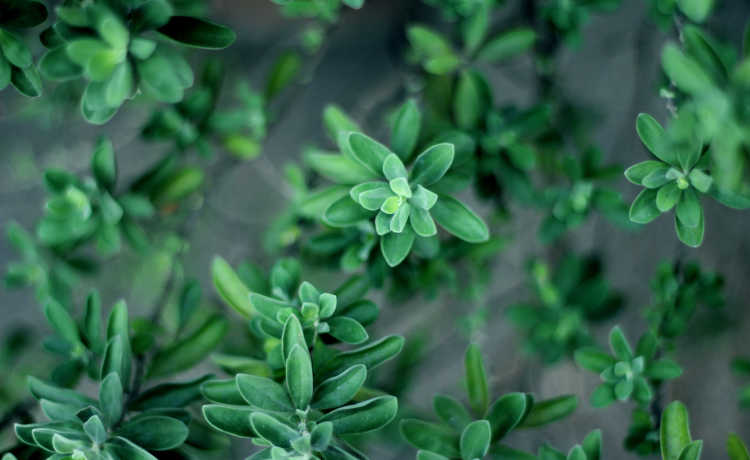How to raise Californian compost worms
Understand how to raise earthworms with your organic waste and reduce waste and greenhouse gas emissions

To raise worms at home, basically, you need to assemble the worm house, make the bed, feed it with organic waste and cover it with dry matter. Understand how and why people are joining the practice of raising worms at home and how to get started:
- Humus: what it is and what are its functions for the soil
- What is organic waste and how to recycle it at home
- What are greenhouse gases
About California Earthworms
California earthworms, red earthworms, California earthworms, California earthworms, are several popular names that refer to the species of earthworms used to make the humus through composting. Californian earthworms are significant for the process of generating humus, an important matter resulting from composting, without which existence on Earth as we know it would be impossible.
Despite being worms, California worms are hygienic beings and play an important role in cities, where they are used to reduce organic waste generated in homes, reducing the demand for space in landfills and dumps; and the emission of greenhouse gases generated in the transport of waste.
Earthworms form a group of worms that make up more than 8,000 different species, some of which even belong to aquatic environments. However, compost earthworms are part of the epigeic group. This group is formed by types of earthworms that live closer to the earth's surface and feed on organic matter, rarely opening up galleries in the soil. That's why they are the most appropriate worms to breed in captivity, as in the case of a composter.
Compared to other species, California compost worms have a high capacity to digest different types of organic matter and in large amounts. Also, they support different temperatures; have high reproduction and fertility; rapid growth; early sexual maturity; and resistance to sieving and manual scavenging.
- Composter: what it is, how it works and its benefits
- Earthworm: environmental importance in nature and at home
The main earthworms used in mine farming are the species with scientific name eisenia andrei, Eisenia fetida, Dendrobaena rubida, Dendrobaena veneta and Lumbricus rubellus (temperate climate species). The most used tropical climate species are the Eudrillus eugeniae, Perionyx excavatus and Pheretima elongata.
Most compost worms belong to the species E. andrei and E. fetida, the well known California earthworms . But, the Californian compost worms from Brazil belong to the species E. andrei.
Both Californian earthworm species come from Europe, despite their name. They are already distributed all over the world and can survive in environments with a high variation of humidity and temperature, from 70% to 90% and from 0ºC to 35ºC, respectively.
When California earthworms live under ideal conditions, they reproduce quickly and daily consume an amount of organic matter equivalent to their weight.
Reproduction takes place through the laying of cocoons, which are placed, on average, one at a time every two or three days. The cocoon viability percentage is around 73% to 80%, generating 2.5 to 3.8 worms per cocoon. Each cocoon of a California earthworm takes 18 to 26 days to hatch, and sexual maturity is reached in about 28 to 30 days.
Benefits of raising earthworms
Earthworms are hygienic beings and you can grow them at home (even in apartments) as pets, through composting, or vermicomposting.
Most of the garbage produced at home is of organic origin, that is, vegetable waste and, in part, animals. This type of waste, if destined for landfills and dumps, ends up increasing the demand for underutilized spaces and contributes to the emission of greenhouse gases.
Raising Californian worms in a compost bin avoids the emission of these greenhouse gases, reduces vegetable waste destined for landfills and dumps, and also generates quality humus and liquid fertilizer as products.
Earthworms digest part of the organic matter (food residues of vegetable origin in the case of compost vermiculture), facilitating the work of microorganisms in the generation of humus.
In addition to this humus generation process, it avoids the emission of greenhouse gases - such as methane - not only through the process of transforming garbage into humus, but also because it reduces emissions from burning fuel from the transport of garbage to landfills, there are reports of people who claim that raising worms can have therapeutic benefits. According to a study, human contact with a bacteria present in the humus works as an antidepressant, decreasing allergies, pain and nausea.
- What is compost and how to make it
- Guide: how is composting done?
- Interview: homemade compost is hygienic
- Guide on how to reduce household waste: find out how to reduce waste going to common garbage
- Learn how to make natural insecticide and pest control in the garden
Humus, the main product of compost, is a substance very rich in nutrients for plants and essential for life on Earth. In addition to this, the composter produces a liquid fertilizer called slurry. Depending on the water dilution ratios, compost slurry can be used either as a fertilizer or as a pesticide.
If it is diluted with ten parts of water, it serves as a liquid fertilizer; if diluted in just a part of water, it serves as a natural pesticide and can be sprayed on plant leaves - preferably in the late afternoon.
how to raise earthworm
In cities, the most suitable place to raise worms is in compost. It consists of a lid and three or more stackable plastic boxes (the amount depends on family demand, as does the size of the containers). The two upper boxes work as digesters, with holes in the bottom, which serve exclusively for the migration of worms and liquid drainage. The last bottom box works as a storage for the slurry produced in the process, and comes with a small tap for its removal.
But there are several types of composters, which you can check in the article: "Domestic composting: how to do it and benefits". And it is also possible to make your own composter. Find out how to make yours in the article: "Learn how to make a home composter with earthworms".
In the beginning, to create the worms it is necessary to make a small layer (about 7 centimeters) of earthworm humus (already containing some earthworm individuals) in the first box on top of the compost bin, where their organic residues will be deposited. And the two lower boxes will be empty.
There are certain foods that cannot be fed to earthworms. To find out what goes and doesn't in home composting, take a look at the article: "Learn which items should not go into your home composter"
The decomposition made by the worms takes place little by little, being necessary to add small amounts of organic residue at a time in the composter, in the first box (where the humus layer is located).
At each deposit, the organic matter must be covered with dry matter, such as dry leaves or sawdust. When the first box is full, it should be swapped with the middle box, and remain at rest until the second box (this time located on top) is also full. Normally, the formation of the resting box humus will take about two months. This is the time for the top box to fill. If the top box takes less time than that to fill, it means your family needs more digestive boxes.
The slurry (fertilizing liquid) must also be collected periodically. And neither he nor the composter must have a bad smell. If this happens, it is a maintenance issue. So don't miss the tips from eCycle portal in the article: "Problem in the composter? Find out about solutions".
When it's time to remove the finished humus, it is necessary to manually collect the worms and return them to the composter. But remember to leave at least 7 cm of humus at the base of the digester box. It serves as a bed for earthworms and a store for micro-organisms.
To make the process easier, you can light a lamp above the box from which you want to harvest the humus, or simply leave it in the sun for a few minutes. This will cause the worms - which are photosensitive - to hide in the lower parts of the box.
Who can raise earthworm?
Anyone can raise worms It is not necessary to be super knowledgeable or connoisseur of the subject, to live in a farm or in a huge house to raise worms. Even those who live in an apartment can purchase a worm farm. And you don't have to worry about dirt, as if properly cared for, the earthworm composter is hygienic. Understand about this theme in the article: "Interview: homemade compost is hygienic".










